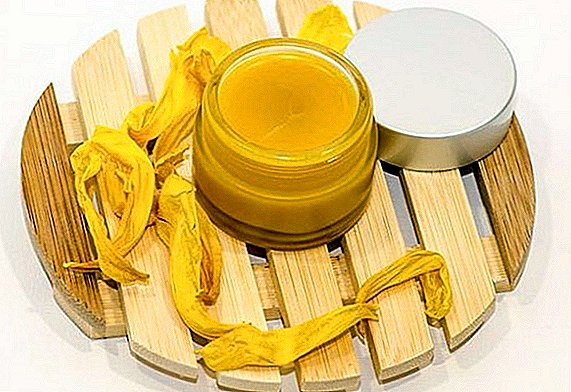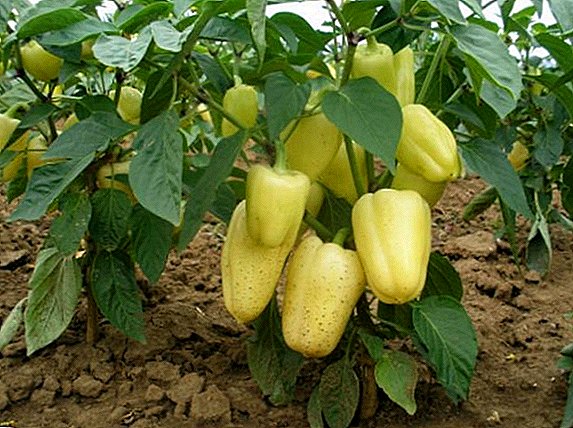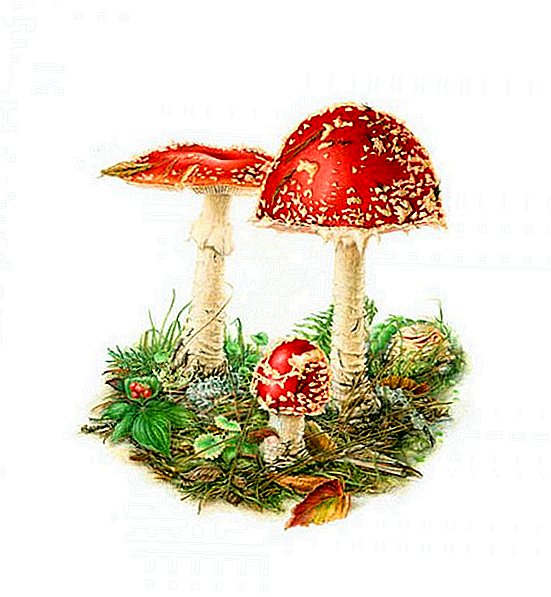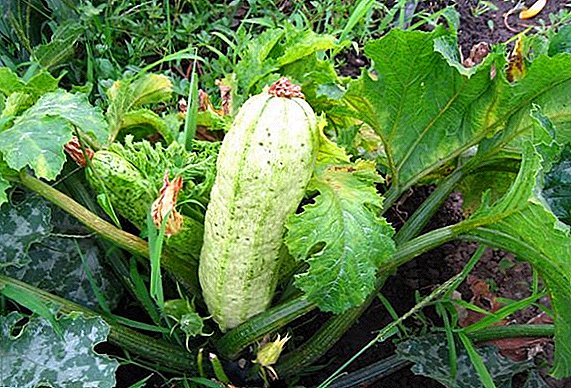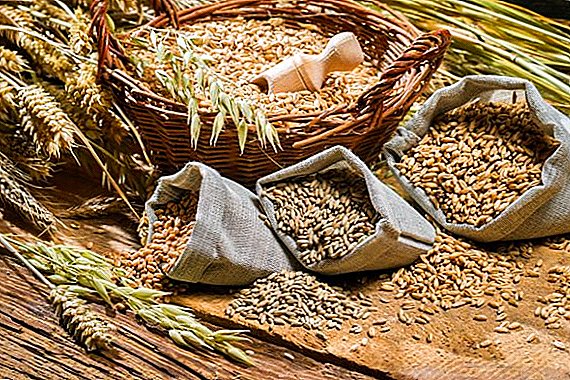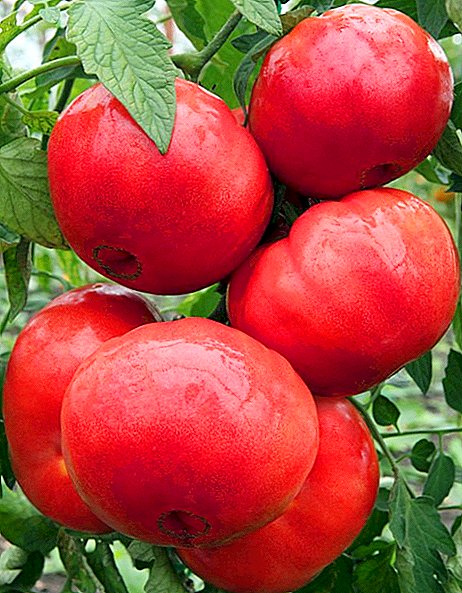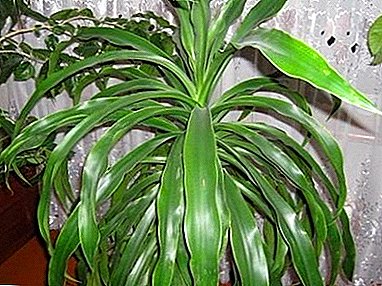
Among lovers of indoor plants, dracaenas are very popular. This plant belongs to this family as Agave plants and grows in the wild, as a rule, in the form of trees or succulent shrubs.
Dracaena came to us from southern latitudes - they widespread in tropical regions of Africa, Asia, Australia, and the Canary Islands.
Description
Most often Dratzenu Hooker is bred in greenhouses with specially created conditions. This plant can grow up to two meters in height, and the trunk can split. The leaves of the Drakena Hooker are leathery, somewhat narrowed at the base, and their length can vary from 60 to 80 centimeters.
Leaves in this species, dracenas are characterized by slightly whitish edges, and a slightly protruding vein is located on the lower surface of the leaf.
Trunk branched, like the panicle-shaped inflorescence.
This version of the dracaena received its name in honor of the famous British explorer Joseph Dalton Hooker.
Home care
 When caring for the dragonfly Hooker, it is worth taking into account a number of rules on care, which concern, in essence, all representatives of this species.
When caring for the dragonfly Hooker, it is worth taking into account a number of rules on care, which concern, in essence, all representatives of this species.
First of all, remember that dracaena - photophilous plant, but at the same time it does not tolerate direct sunlight (they can provoke the occurrence of various diseases).
If in your house dracaena is on the windowsill, then it should be protected from the light by a curtain.
Wherein presence of shadow or even partial shade will affect the plant negatively. The owner should keep an eye on the smallest changes in leaf color, and any discoloration may indicate problems.
An important storage condition relates to irrigation, which should be limited in the autumn-winter period - it is not allowed to overcool the substrate, which can lead to freezing of the roots.
Features care after purchase
Buying Dracene Hooker, try correctly decide on a place its location in the house, given all the subtleties of lighting and temperature.
You should not immediately put the plant next to others, it is better to arrange a small "quarantine" for a couple of days. If after this time the leaves do not show signs of illness, then you can safely put a flower in your home greenhouse.
Lighting
Dracaena Hooker, like all her fellows, prefers well-lit places, while free from direct sunlight. It is often said that dracaena is a shade-loving plant, but it is not. In a shady corner, she begins to die.
Will be correct winter move the plant closer to the window, since winter lighting is not enough.
And if it is possible to arrange artificial lighting, it will be the best option, as the dracaena feels great in such conditions.
Temperature
Most comfortable temperature for the maintenance of the Drakena Hooker there will be the following range: from +10 to + 12 ° C in winter and from +18 to + 25 ° C in summer. In addition, Dracaena Hooker belongs to the more enduring species of dracaena and grows well in the open air, the main thing is that the plant is closed from drafts.
Air humidity
Hooker's dragon plant can be called a non-capricious plant, it quite resistant to dry air, but in the summer it is recommended to moisten the leaves from time to time with an atomizer, especially with regard to rooms with central heating.
The plant will be grateful if sometimes you will arrange it warm shower which will help remove dust and refresh the leaves.
Watering
In order to provide your Dratzena Hooker with the most comfortable conditions of detention, you should pay attention to the moisture level of the substratewhich should be moderately moist and in no case swampy. Do not allow the soil to dry out.
In the autumn-winter period, watering should be minimal, and the soil should be loosened periodically. Proper watering and regular spraying is a prerequisite for the safe existence of Drakesen Hooker in any room.
Bloom
Flowering for any dracaena is rarityand Dracaena Hooker is no exception here. If the plant has experienced stress, it can bloom with small and inconspicuous flowers, gathered in panicles or small group inflorescences. The color of flowers, as a rule, varies from white to pink or light green.
To obtain the ovary of the seed, you can make your own pollination using the most ordinary brush, and it is better to do it in the morning. After the plant has faded, it is necessary to carefully trim off the flowering inflorescences.
Fertilizers (dressing)
In the period of the most active growth, which at Draceni Hooker lasts from April to August, it is necessary to produce plants every two weeks with specialized complex fertilizers. This is the most favorable time. All the rest of the time it is perfectly acceptable to feed the dragon-seed not so often.
Transfer
Transplanting adult dracaena can be done once every two years - in the spring, either every year, if your palm is still “young” or grows too fast.
Transplantation is as follows: put a drainage (small stones, shards) in a larger pot, a peat-earthen mixture with inclusions of humus, leaves, coarse sand is poured on top.
The better the drainage is done, the better the plant will feel.
Growing up
 You can grow dracaena, including Dracula, Hooker, and from seeds, which are quite possible to buy in flower shops, although they are not there too often. Shop seeds best planted in early spring, previously soaking for 24 hours in “Zircon” or “Epin”.
You can grow dracaena, including Dracula, Hooker, and from seeds, which are quite possible to buy in flower shops, although they are not there too often. Shop seeds best planted in early spring, previously soaking for 24 hours in “Zircon” or “Epin”.
If you managed to grow the seeds yourself, then after aging it is necessary to carefully remove the pulp and plant them in the ground immediately. To prepare the substrate, you should mix the ground and sand harvested in equal proportions, or use ready-made soil designed specifically for dracaena.
When landing in a wet substrate will be the right to use tanks with drainage holes made in themwhich must be transferred to a warm and lighted place and covered with a film on top.
Breeding
Hooker's Dracene can be propagated in different ways, and everyone can choose the most suitable for themselves. Main condition - compliance with temperature and humidity conditions. Most often, the dracaena is propagated by top cuttings - they cut off the top of the old plant and root it in the soil with the help of fertilizers and heating.
There is also a method of propagation by layering - from the upper part of the plant, air layouts are obtained, which are subsequently removed for a separate landing. No less common is the method of disembarking dracaena by segments of the stem, when small fragments of the stem serve as cuttings and root at high temperature.
None of these methods is of any particular complexity under all conditions.
A photo
Dracaena Hooker: a photo of a popular plant.



Fruits and their application
Even among experienced flower growers, confusion often occurs when the fruits of dracaena are mistaken for the fruits of the closely related plant Cordilin. Their main difference lies in the fact that the dracaena has one seed in each of the three nests of the fruit.
And the fruit itself has the shape of a berry. Dracaena blooms very infrequently, the fruits ripen rarely, and the seeds are used, as a rule, for planting.
Diseases and pests
With all the conditions of care, you can not worry about the dragon flower, because they are very rarely ill. Major problems may be caused inadequate watering, which can start to dry the leaves, or direct sunlight that causes burns.
These problems are solved by changes in the mode of watering and moving the plant to a more convenient place. As for insects, most often the dragon plant is affected by a scythe or spider mite. You can remove the shield with soapy water and insecticides, and you can get rid of the spider mite only with the help of acaricides.
Conclusion
Dracaena - this plant is not only very popular among Russian flower growers. She is chosen for an elegant look and resemblance to a palm treeMoreover, it can grow up to several meters in height, and caring for it does not require any fantastic efforts.
Its decorative function is indisputable., because any interior will benefit if it is decorated with such an expressive plant.


